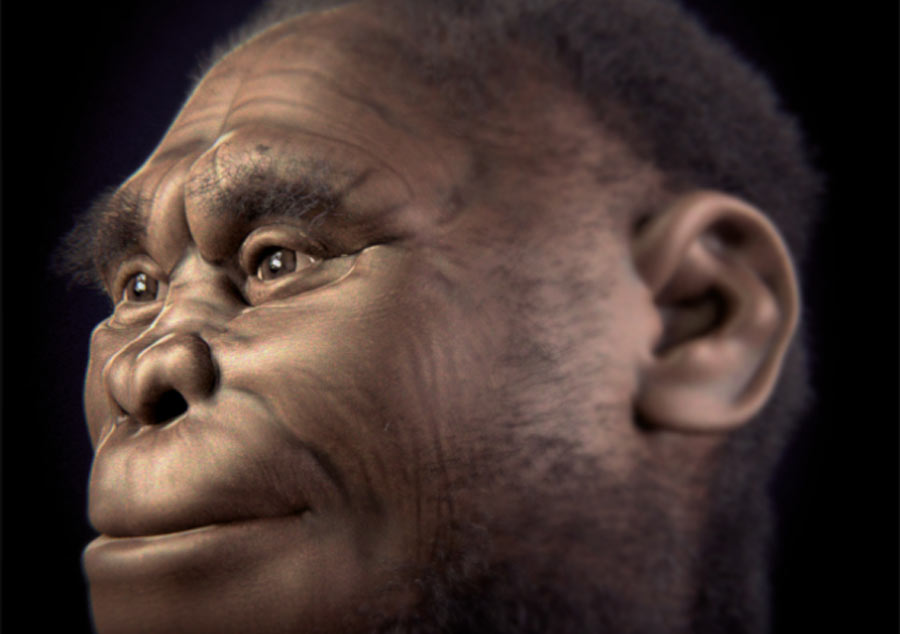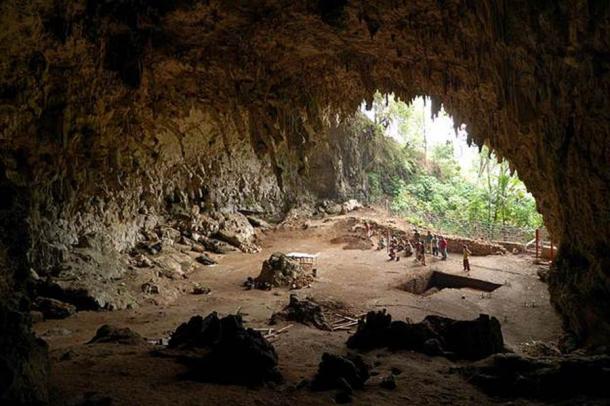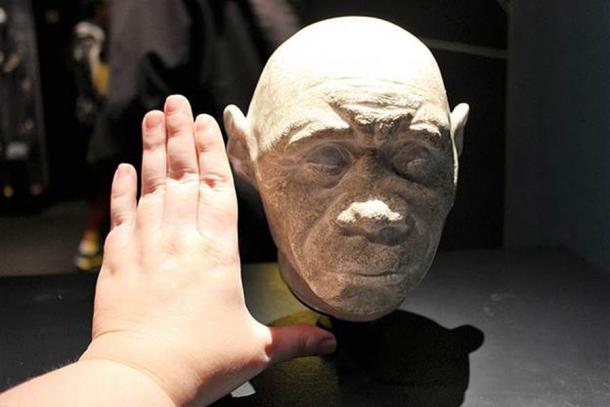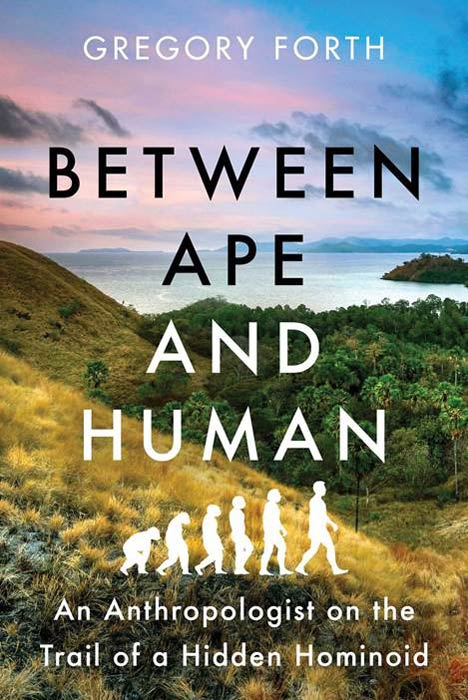

In his newly published book Between Ape and Human, retired anthropologist Gregory Forth breaks the taboo that normally separates traditional anthropological and zoological research from cryptozoology (the search for mythological or legendary species like Bigfoot, the Loch Ness monster, or the Abominable Snowman). However, Homo floresiensis, as Gregory Forth’s latest book title makes clear, is between ape and human, and this leads to a fascinating tale!
Forth spent many years living among indigenous people on the eastern Indonesian island of Flores, and during his time there he heard stories about a rare and elusive species of ape-man who was said to reside in nearby caves and forests. Forth eventually concluded that these stories might be true, and that such a creature might exist largely hidden from view (with a strong emphasis on ‘might’, Forth would be certain to point out).
Even more surprisingly, the former University of Alberta (Canada) academic concluded that if these ape-men really do exist, they would most likely come from the archaic human species Homo floresiensis, which is known to have lived on Flores before presumably going extinct tens of thousands of years ago.
This is a remarkable theory for a conventional academic (albeit retired and secure in his pension) to propose, even if he only raises it as a possibility and not as a certainty. But Forth was willing to crawl out on this particular limb, based on his respect for the indigenous people he got to know so well, and on the shocking discovery that a species of prehistoric hominin did live on the island of Flores much more recently than scientists had ever thought possible.

Cave where the remains of Homo floresiensis were discovered in 2004, Lian Bua, Flores, Indonesia. (CC BY-SA 2.0)
The Astonishing Discovery of Homo Floresiensis
In 2004, a team of scientists who’d been carrying out archaeological research on Flores published a report in the journal Nature that shook the world of prehistoric anthropology to its core. They described their discovery of unusual hominin fossils in a cave known as Liang Bua, in a sediment layer that was later proven to be between 60,000 and 100,000 years old.
These fossils possessed characteristics that revealed them to be ancient primates, yet they were entirely unique, matching nothing previously known from the fossil record. The specimens shared important characteristics with fossils from various extinct human species, like Homo erectus and Australopithecus, but also possessed physical traits more familiar to those who study fossils of ancient apes.
Eventually, the scientists were able to verify that they had indeed discovered a new archaic human species. This hominin was small, with the typical adult reaching something less than four feet in height (this is how they acquired the nickname “the Hobbits”), and its brain cavity had only one-third the capacity of Homo sapiens. Yet it made its own tools and could have only reached the island of Flores by crossing the ocean on boats.
This was truly a remarkable discovery, because this new species—which was officially dubbed Homo floresiensis—was the first ancient human-like hominin ever found so late in the fossil record.

The model of a Homo floresiensis woman’s head with a modern human’s hand, at the Natural History Museum in London, England. (Emőke Dénes/ CC BY-SA 4.0)
During continuing excavations, archaeologists and anthropologists uncovered more than 20,000 stone tools that had been manufactured by these archaic humans. These were dated to between 50,000 and 190,000 years ago, pushing the survival of the last of the Homo floresiensis even closer to modern times.
Since it is believed that early modern humans may have reached Australia as recently as 65,000 years ago, it is possible that humans were living on the island of Flores at the same time as the last of the Homo floresiensis. Oceanic travelers migrating from southeast Asia to Australia would have passed close to Flores and some might have chosen to stop there.
Subsequent discoveries have found more evidence of a Homo floresiensis presence on Flores. In a 2016 Nature article, archaeologists revealed they’d found a small collection of fossils that most likely had come from Homo floresiensis at a site called Mata Menge, which was 45 miles (72 kilometers) from Liang Bua. This site also produced stone tools virtually identical to those found at Liang Bua, and in this instance the fossils and tools were both dated to about 70,000 years ago.
Another amazing discovery established just how long the species had lived on Flores. During excavations at a site called Soa Basin, archaeologists uncovered deeply buried stone tools made in the distinctive Homo floresiensis style. The layer of sediment where they were found was eventually dated to one million years in the past, meaning Homo floresiensis had settled on the island a half-million years before the earliest modern humans had even evolved.

Gregory Forth’s book, Between Ape and Human, examines the crucial evolutionary stage, often overlooked, between primates and hominins, and Homo Floresiensis fits in this gap. (Pegasus Books)
A Wild Theory from a Surprising Source
Anthropologist Gregory Forth spent many years living among an ethnic group known as the Lio, an agricultural people who live and farm in the mountainous central region of Flores, Indonesia. During his time with the Lio in the 1990s and early 2000s, Forth heard repeated tales of an exceedingly small ape-man that was said to occupy Lia Ula cave, which was located nearby on the slope of a dormant volcano.
Some of the people he spoke with in Lio villages told him that these ape-men, who they referred to as the Ebu Gogo, were no longer around. The last of the Ebu Gogo had been killed off by the Lio’s neighbors, the ‘Ua people, they said, approximately 200 years ago.
But others told Forth that this was not so. The Ebu Gogo still lived in nearby caves and forests, these people swore. Gathering evidence to support this claim, Forth spoke to approximately 30 witnesses who said they’d actually seen the mysterious half-ape, half-man-like creature on at least one occasion.
The normal pattern among western anthropologists is to dismiss stories like these as nothing more than folklore like Bigfoot, or the Abominable Snowman. But Forth wasn’t quite ready to follow their example. He was impressed by the sincerity of the witnesses he spoke to, and by the consistency of their descriptions of the creature’s physical characteristics.
In Between Ape and Human, Forth writes about the impact it had on him when the discovery of Homo floresiensis was announced in 2004. He realized right away that the descriptions provided by witnesses who’d seen the Ebu Gogo matched the physical characteristics ascribed to Homo floresiensis quite nicely.
The leader of the team that discovered Homo floresiensis, archaeologist Mike Morwood from the University of Wollongong in Australia, had also heard the stories about Ebu Gogo. Notably, he said the alleged creature “fitted floresiensis to a T.”
This could have been a coincidence. But a good scientist doesn’t dismiss an inconvenient or unusual fact as “coincidence” without investigating first. After careful analysis and consideration, Forth concluded that the small ape-man allegedly seen by so many Lio witnesses really could have been Homo floresiensis.
“My aim in writing the book was to find the best explanation—that is, the most rational and empirically best supported—of Lio accounts of the creatures,” Forth wrote in a recent article in The Scientist. “And I conclude that the best way to explain what they told me is that a non- sapiens hominin has survived on Flores to the present or very recent times.”
In the short-term, this conclusion is unlikely to find much support among other anthropologists or in the greater scientific community. Unless someone can produce non-fossilized skeletal remains or an actual specimen of Ebu Gogo either living or dead, current assumptions about the mythological standing of the ape-man and the ultimate fate of Homo floresiensis will remain in place. For now, the Ebu Gogo will remain classified as folklore, while Gregory Forth will be classified by many as a respectable scientist who’s gone rogue.